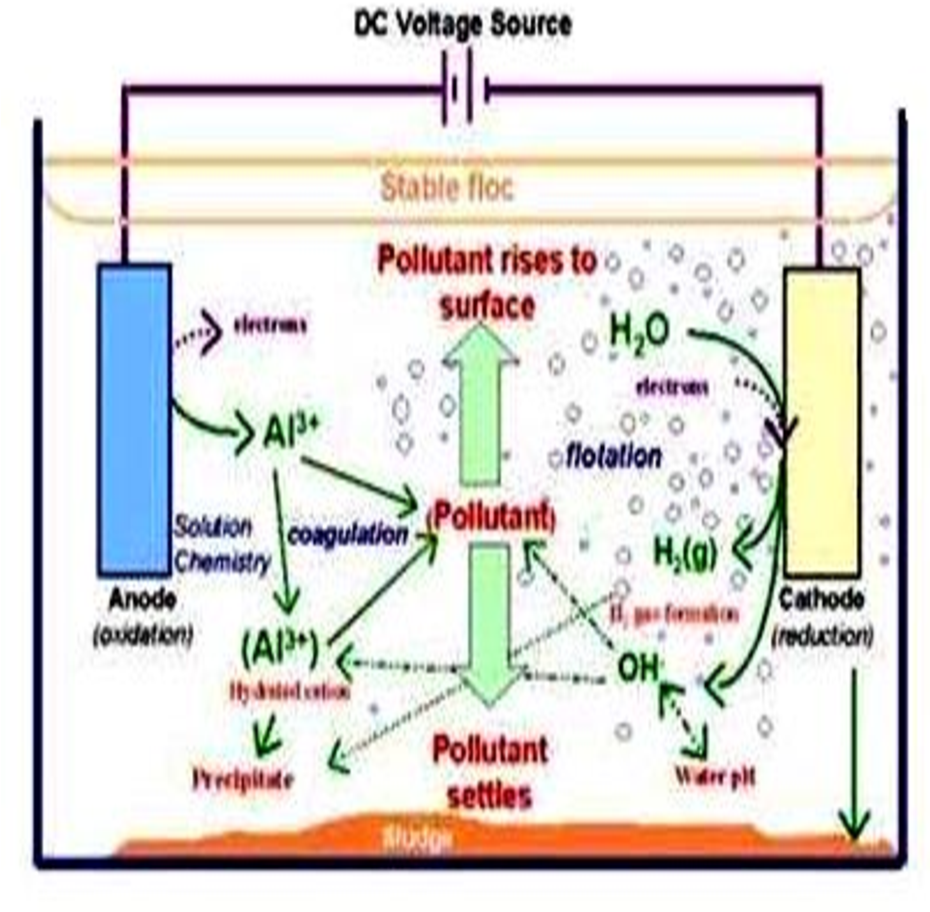Consultant expert, Dr. Muhammad Taha REMOVAL OF COPPER ION FROM WASTE WATER BY FLOTATION
On Sale
$0.00
$6.99
Consultant expert, Dr. Muhammad Taha
REMOVAL OF COPPER ION FROM
WASTE WATER BY FLOTATION
A Thesis
Submitted to the College of Engineering of the University of Baghdad in
Partial Fulfillment of the Requirement for the Degree of Master of Science
in Environmental Engineering
REMOVAL OF COPPER ION FROM
WASTE WATER BY FLOTATION
Abstract
Several industrial wastewater streams may contain heavy metal ions,
which must be effectively removal before the discharge or reuse of treated
waters could take place.
Various parameters such as pH, air flow rate, collector and frother
concentrations, initial copper concentration, hole diameter of the gas
distributor and NaCl addition were tested at room temperature in a bubble
column of 6 cm inside diameter and 120 cm height.
Sodium dodecylsulfate (SDS) and Hexadecyltrimethyl ammonium bromide
(HTAB) were used as anionic and cationic surfactant, respectively. Ethanol
was used as frothers and the optimal removal conditions have been
established. Successful removals about (98%) and (76%) could be achieved
for copper ions with SDS and HTAB, respectively. Copper removal reached
about 80% under the optimum conditions at low pH; at high pH it became as
high as 98% probably due to the contribution from the flotation of
precipitated copper.
II
Abstract
It was found that the presence of NaCl in the solution reduced the
recoveries since the presence of excess Na+ ions compete with metal and the
metal ions cannot find enough surfactant molecules to attach to. Adding
ethanol at 1% concentration increased the removal efficiency. From the
results the rate of flotation was found to be first order
الخبير الاستشاري الدكتور محمد طه
إزالة أيونات النحاس من
نفايات المياه عن طريق التعويم
أطروحة
قدم الى كلية الهندسة جامعة بغداد في
استيفاء جزئي لمتطلبات درجة الماجستير في العلوم
في الهندسة البيئية
إزالة أيونات النحاس من
نفايات المياه عن طريق التعويم
الملخص
قد تحتوي العديد من تيارات مياه الصرف الصناعي على أيونات معادن ثقيلة ،
التي يجب إزالتها بشكل فعال قبل تصريف أو إعادة استخدام المعالجة
يمكن أن تحدث المياه.
معلمات مختلفة مثل الأس الهيدروجيني ، ومعدل تدفق الهواء ، والمجمع ، والرغوة
التركيزات ، تركيز النحاس الأولي ، قطر ثقب الغاز
تم اختبار الموزع وإضافة NaCl عند درجة حرارة الغرفة في فقاعة
عمود قطره الداخلي 6 سم وارتفاعه 120 سم.
دوديسيل كبريتات الصوديوم (SDS) وسداسي ديسيل ترايميثيل بروميد الأمونيوم
تم استخدام (HTAB) كخافض للتوتر السطحي أنيوني وكاتيوني ، على التوالي. الإيثانول
تم استخدامه كأخوة وكانت ظروف الإزالة المثلى
أنشئت. يمكن تحقيق عمليات الإزالة الناجحة حوالي (98٪) و (76٪)
لأيونات النحاس مع SDS و HTAB ، على التوالي. وصلت إزالة النحاس
حوالي 80٪ في ظل الظروف المثلى عند درجة حموضة منخفضة ؛ عند درجة الحموضة العالية أصبح كما
عالية تصل إلى 98٪ ربما يرجع ذلك إلى المساهمة من التعويم
ترسب النحاس.
ثانيًا
الملخص
وجد أن وجود كلوريد الصوديوم في المحلول يقلل من
عمليات الاسترداد منذ وجود أيونات الصوديوم الزائدة تتنافس مع المعدن و
لا تستطيع أيونات المعادن العثور على ما يكفي من جزيئات الفاعل بالسطح لتلتصق بها. مضيفا
زاد الإيثانول بتركيز 1٪ من كفاءة الإزالة. من
النتائج تم العثور على معدل التعويم ليكون من الدرجة الأولى
REMOVAL OF COPPER ION FROM
WASTE WATER BY FLOTATION
A Thesis
Submitted to the College of Engineering of the University of Baghdad in
Partial Fulfillment of the Requirement for the Degree of Master of Science
in Environmental Engineering
REMOVAL OF COPPER ION FROM
WASTE WATER BY FLOTATION
Abstract
Several industrial wastewater streams may contain heavy metal ions,
which must be effectively removal before the discharge or reuse of treated
waters could take place.
Various parameters such as pH, air flow rate, collector and frother
concentrations, initial copper concentration, hole diameter of the gas
distributor and NaCl addition were tested at room temperature in a bubble
column of 6 cm inside diameter and 120 cm height.
Sodium dodecylsulfate (SDS) and Hexadecyltrimethyl ammonium bromide
(HTAB) were used as anionic and cationic surfactant, respectively. Ethanol
was used as frothers and the optimal removal conditions have been
established. Successful removals about (98%) and (76%) could be achieved
for copper ions with SDS and HTAB, respectively. Copper removal reached
about 80% under the optimum conditions at low pH; at high pH it became as
high as 98% probably due to the contribution from the flotation of
precipitated copper.
II
Abstract
It was found that the presence of NaCl in the solution reduced the
recoveries since the presence of excess Na+ ions compete with metal and the
metal ions cannot find enough surfactant molecules to attach to. Adding
ethanol at 1% concentration increased the removal efficiency. From the
results the rate of flotation was found to be first order
الخبير الاستشاري الدكتور محمد طه
إزالة أيونات النحاس من
نفايات المياه عن طريق التعويم
أطروحة
قدم الى كلية الهندسة جامعة بغداد في
استيفاء جزئي لمتطلبات درجة الماجستير في العلوم
في الهندسة البيئية
إزالة أيونات النحاس من
نفايات المياه عن طريق التعويم
الملخص
قد تحتوي العديد من تيارات مياه الصرف الصناعي على أيونات معادن ثقيلة ،
التي يجب إزالتها بشكل فعال قبل تصريف أو إعادة استخدام المعالجة
يمكن أن تحدث المياه.
معلمات مختلفة مثل الأس الهيدروجيني ، ومعدل تدفق الهواء ، والمجمع ، والرغوة
التركيزات ، تركيز النحاس الأولي ، قطر ثقب الغاز
تم اختبار الموزع وإضافة NaCl عند درجة حرارة الغرفة في فقاعة
عمود قطره الداخلي 6 سم وارتفاعه 120 سم.
دوديسيل كبريتات الصوديوم (SDS) وسداسي ديسيل ترايميثيل بروميد الأمونيوم
تم استخدام (HTAB) كخافض للتوتر السطحي أنيوني وكاتيوني ، على التوالي. الإيثانول
تم استخدامه كأخوة وكانت ظروف الإزالة المثلى
أنشئت. يمكن تحقيق عمليات الإزالة الناجحة حوالي (98٪) و (76٪)
لأيونات النحاس مع SDS و HTAB ، على التوالي. وصلت إزالة النحاس
حوالي 80٪ في ظل الظروف المثلى عند درجة حموضة منخفضة ؛ عند درجة الحموضة العالية أصبح كما
عالية تصل إلى 98٪ ربما يرجع ذلك إلى المساهمة من التعويم
ترسب النحاس.
ثانيًا
الملخص
وجد أن وجود كلوريد الصوديوم في المحلول يقلل من
عمليات الاسترداد منذ وجود أيونات الصوديوم الزائدة تتنافس مع المعدن و
لا تستطيع أيونات المعادن العثور على ما يكفي من جزيئات الفاعل بالسطح لتلتصق بها. مضيفا
زاد الإيثانول بتركيز 1٪ من كفاءة الإزالة. من
النتائج تم العثور على معدل التعويم ليكون من الدرجة الأولى




